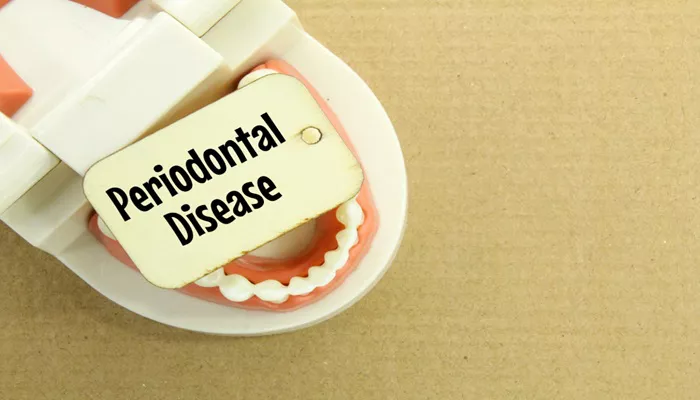Periodontal disease, commonly referred to as gum disease, is a serious infection of the gums that can damage the soft tissue and, without treatment, destroy the bone that supports your teeth. This condition is typically caused by poor oral hygiene, which allows plaque—a sticky film of bacteria—to build up on the teeth and harden. In its early stage, called gingivitis, the gums can become swollen, red, and bleed. If not treated, it can progress to periodontitis, causing the gums to pull away from the teeth, bone loss, and ultimately tooth loss.
Early Diagnosis And Treatment
Early diagnosis and treatment are crucial for recovering from periodontal disease. Gingivitis, the earliest stage of gum disease, is often reversible with good oral hygiene and professional cleaning. If you catch gum disease at this stage, you can prevent it from progressing to periodontitis.
Signs And Symptoms of Periodontal Disease
Knowing the signs and symptoms of periodontal disease can help you seek treatment early. Common indicators include:
Swollen, red, or tender gums
Gums that bleed easily
Persistent bad breath or a bad taste in the mouth
Receding gums or longer-appearing teeth
Loose or shifting teeth
Pus between the teeth and gums
If you notice any of these symptoms, it’s important to visit a dental professional for an evaluation.
Treatment Options for Periodontal Disease
The treatment for periodontal disease depends on the severity of the condition. The main goal is to control the infection and halt the progression of the disease.
SEE ALSO: The 2 Best Treatments for Periodontal Disease
1. Non-Surgical Treatments
Scaling and Root Planing: This deep-cleaning procedure involves removing plaque and tartar from above and below the gum line and smoothing the root surfaces. This helps to eliminate bacteria and provides a clean surface for the gums to reattach to the teeth.
Antibiotics: In some cases, topical or oral antibiotics are used to reduce bacterial infection. These can be in the form of mouth rinses, gels, or antibiotic pills.
2. Surgical Treatments
Flap Surgery: If non-surgical treatments are not effective, flap surgery may be necessary. During this procedure, the gums are lifted back, and the tartar is removed. The gums are then sutured back in place to fit snugly around the teeth.
Bone and Tissue Grafts: When bone and tissue have been destroyed, grafts may be used to regenerate the lost structures.
Bone grafts use fragments of your own bone, synthetic bone, or donated bone. Tissue grafts involve taking tissue from the roof of the mouth or using synthetic material to cover exposed roots.
Guided Tissue Regeneration: This procedure stimulates bone and gum tissue growth. A small piece of mesh-like fabric is placed between the bone and gum tissue, keeping the tissue from growing into the area where bone should be, allowing bone and connective tissue to regrow.
Maintaining Oral Hygiene
Good oral hygiene is essential for recovering from and preventing periodontal disease. Here are some key practices:
Brush your teeth at least twice a day with a fluoride toothpaste.
Floss daily to remove plaque from between the teeth and under the gum line.
Use an antiseptic mouthwash to help reduce bacteria.
Visit your dentist regularly for check-ups and professional cleanings.
Lifestyle Changes to Improve Gum Health
Certain lifestyle changes can also help improve your gum health and aid in the recovery from periodontal disease:
Quit smoking, as it is a significant risk factor for gum disease and can hinder healing.
Maintain a balanced diet rich in vitamins and minerals to support overall health and gum healing.
Manage conditions like diabetes, which can affect gum health, by keeping blood sugar levels under control.
Can You Fully Recover From Periodontal Disease?
The possibility of recovering from periodontal disease largely depends on the stage at which it is caught and the effectiveness of the treatment. In the early stage (gingivitis), full recovery is highly likely with proper treatment and improved oral hygiene. Once periodontal disease progresses to periodontitis, it becomes a chronic condition. However, with comprehensive treatment and diligent oral care, the disease can be managed, and further damage can be prevented.
Preventing Periodontal Disease Relapse
To prevent the recurrence of periodontal disease, it’s essential to maintain regular dental visits and adhere to a stringent oral care routine. Your dentist may recommend more frequent cleanings, such as every three to four months, to monitor your condition and prevent the disease from returning.
Conclusion
Periodontal disease is a serious oral health condition that requires prompt attention and treatment. While recovery from advanced stages of the disease can be challenging, it is possible to manage and control the condition with the right care and lifestyle changes. By maintaining good oral hygiene, seeking early treatment, and making healthy lifestyle choices, you can protect your gums and overall oral health, ensuring a brighter and healthier smile.

